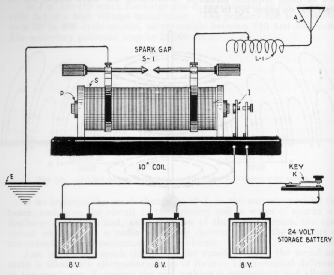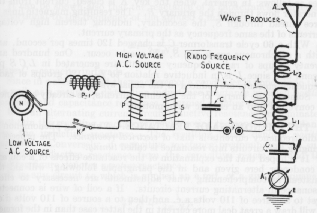King Spark !
grown now to full maturity, developed and prefected by years of pre-war
and war experience, it reached its highest peak in the succeeding eighteen
months. Glorious old sparks! Night after night they boomed and echoed down
the air lanes. Night after night the mighty chorus swelled , by ones, by twos,
by dozens, until the crescendo thunder of their Stentor bellows shook and
jarred the very Universe! A thousdad voices clamored for attention.Five-
hundred-cycle's high metallic ring. The resonant organ basso of th sixty-cycle
"sync". The hash resounding snarl of the straight rotary.
Character: Nevous, impatient sparks, hurring petulantly. Clean-cut busin-ness
like sparks battingsteadily along at a thirty-word clip. Good-natured sparks
that drawled lazily and ended in a throaty chuckle as the gap coasted
down-hill for the sign-off.
Survival of the fittest. Higher and higher powers were the order of the day.
The race wason, and devil take the hindmost.
Interference.
Lord, what interference!
Bedlam!
Well, it could not be Utopia.
-Arthur Lyle Budlong, in
The Story of the American Radio Relay League


